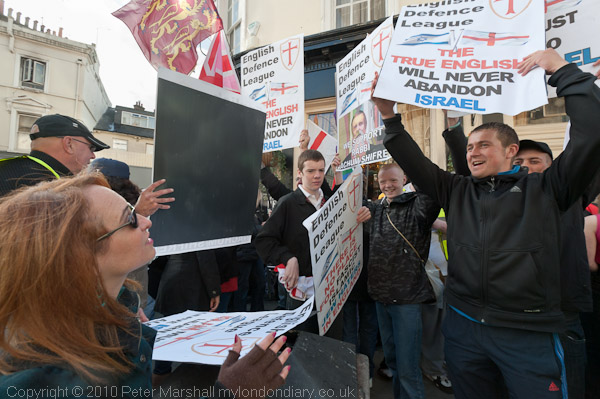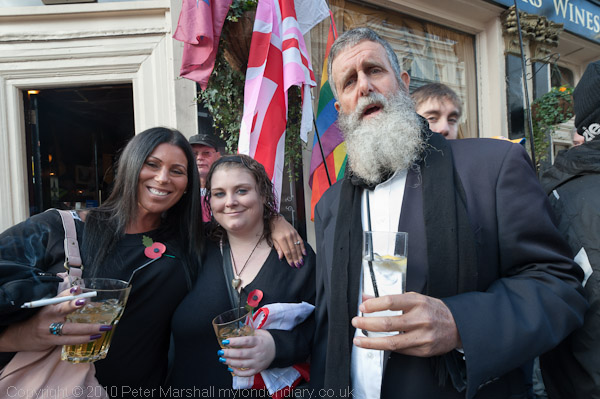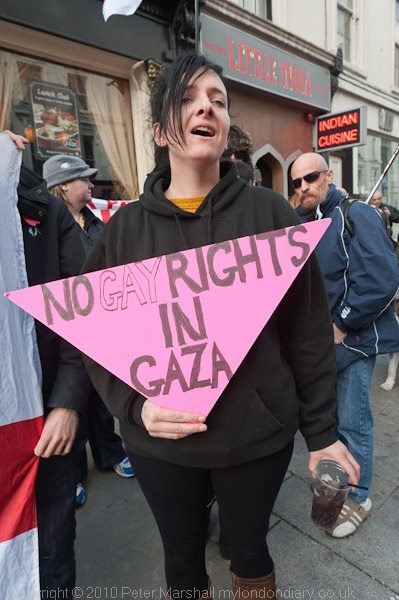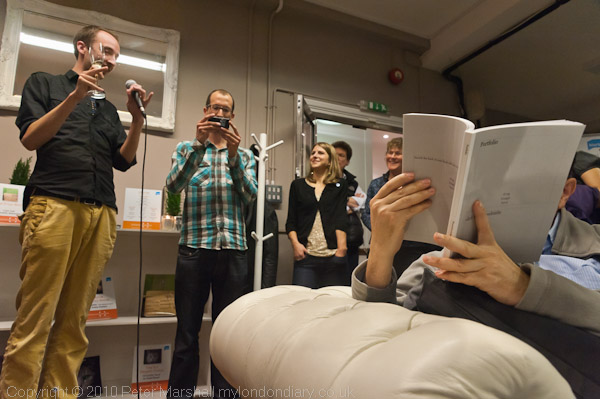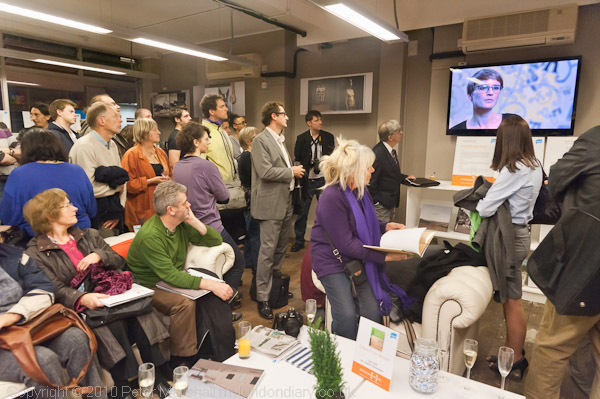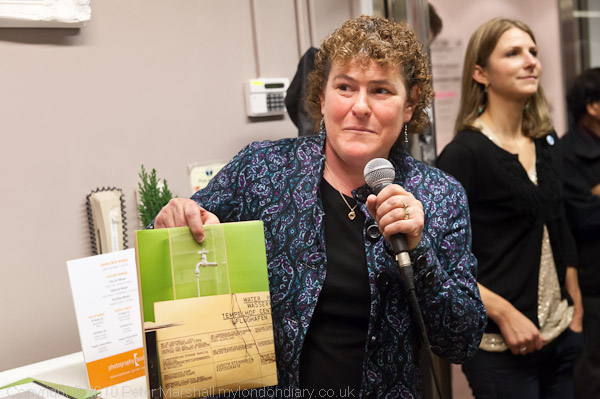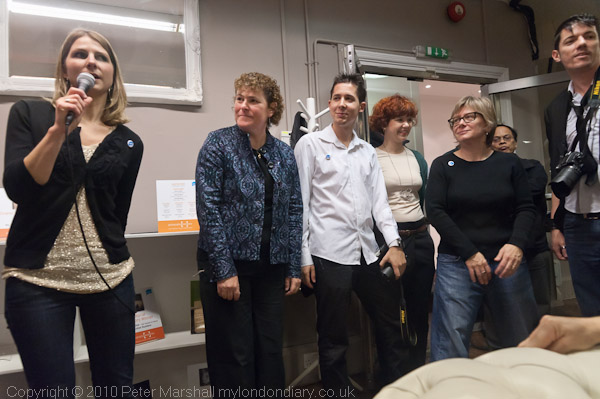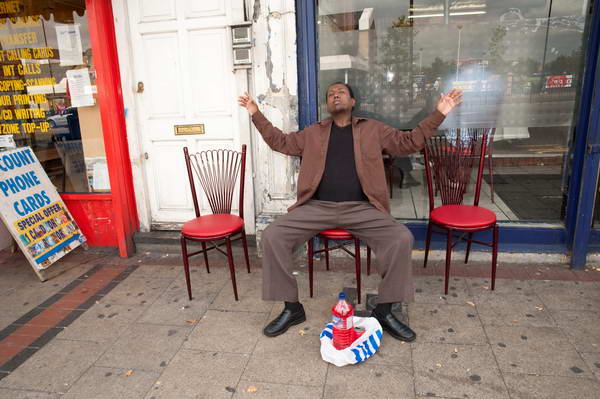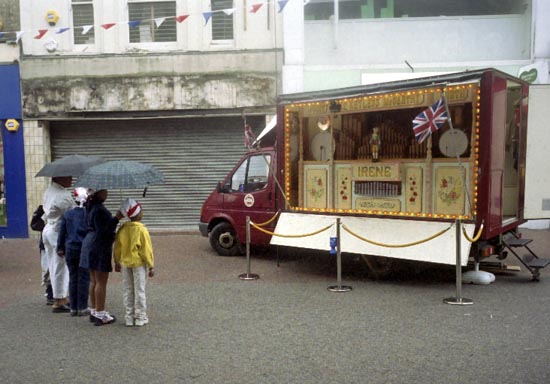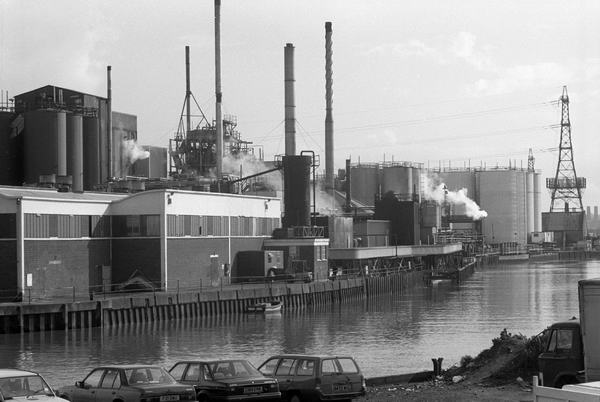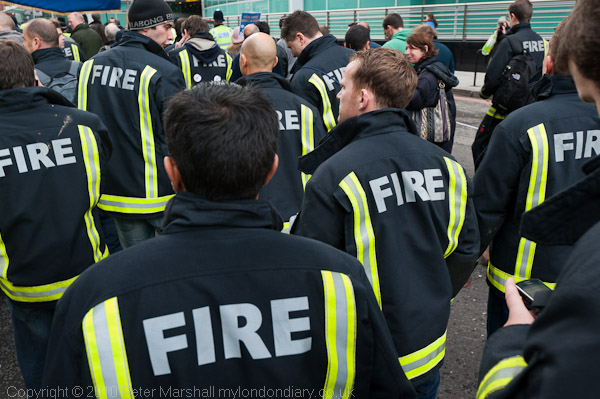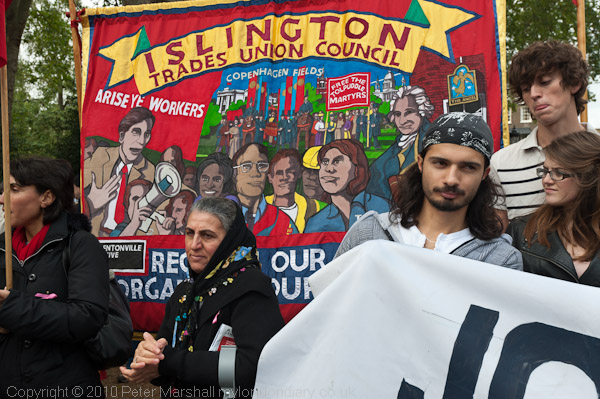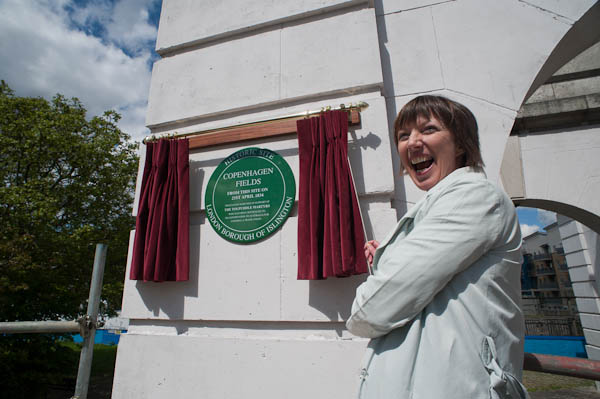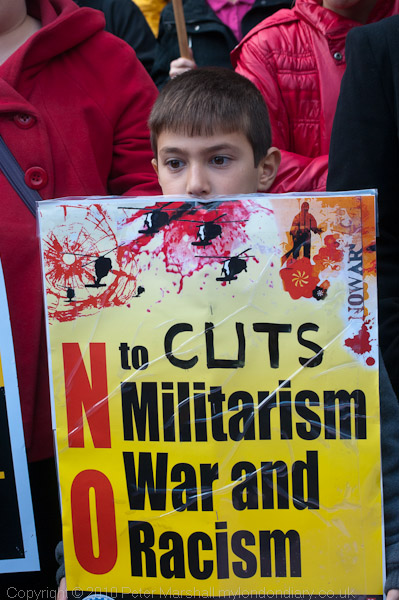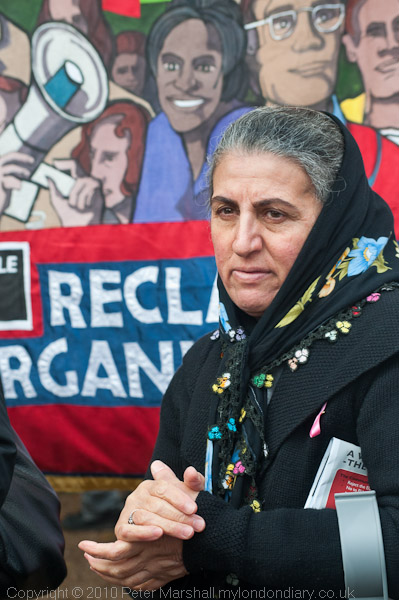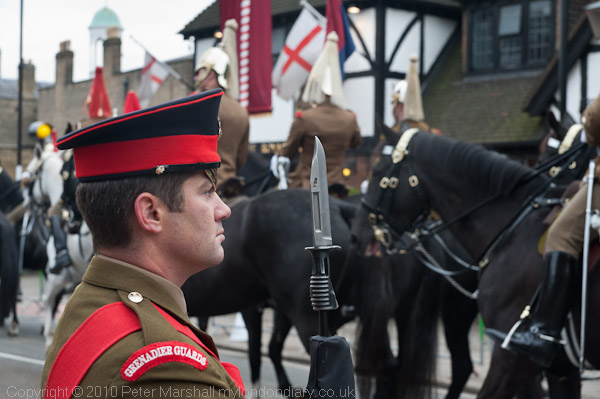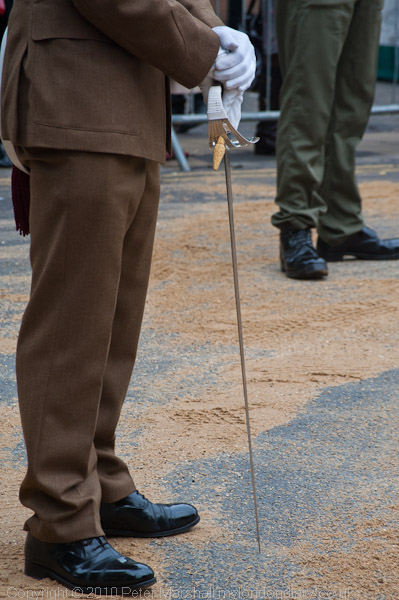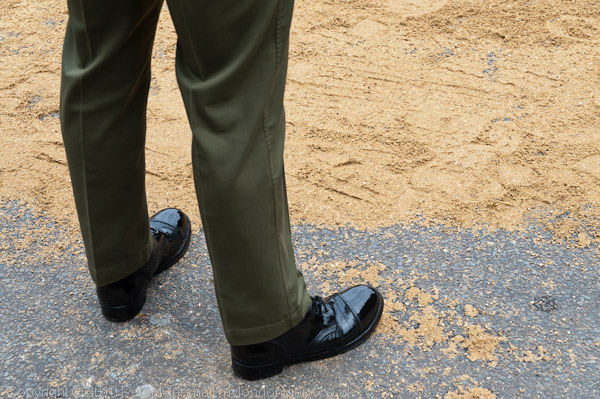I’m not a fan of Halloween, which seems just another sad synthetic commercial opportunity. There is something very unpleasant about the whole ‘trick or treat’ idea, a kind of demand with menaces (and one which sometimes gets out of hand.)
Not that I’m against people having fun, and I do rather like the sight of zombies invading our streets, generally simply out to have a good time and a bit of a party. These and more formal Day of the Dead celebrations perhaps owe more to All Saints Day and All Souls Day than to Halloween which comes before them, although now they have been drawn into a single commercial exploitation.
In 2006, (somewhere well down this page) I met up with some very fine zombies, including the two ladies below for a tour around Oxford St.
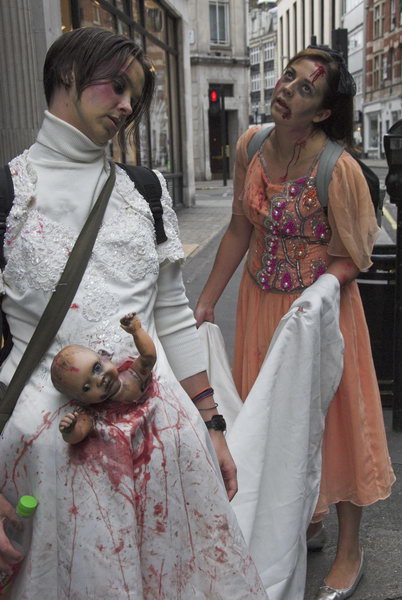
Starting from the very spooky Ben Crouch Tavern (now sadly converted to a pub I find rather plastic and unpleasant) we toured a shopping centre on Oxford Street and walked past the hard-core shoppers before slithering down the steps to Ramillies St (which later became the home of the Photographers’ Gallery),
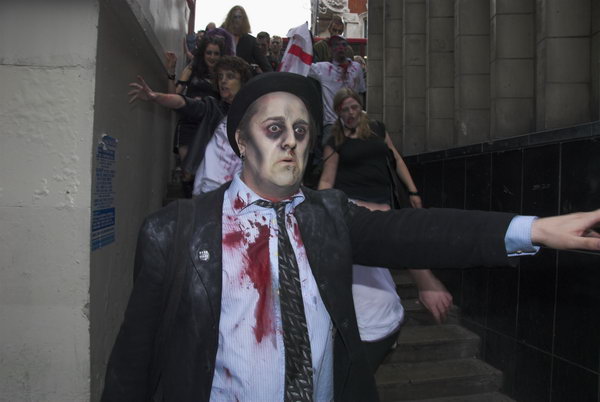
and on to another pub at the top of Carnaby St.
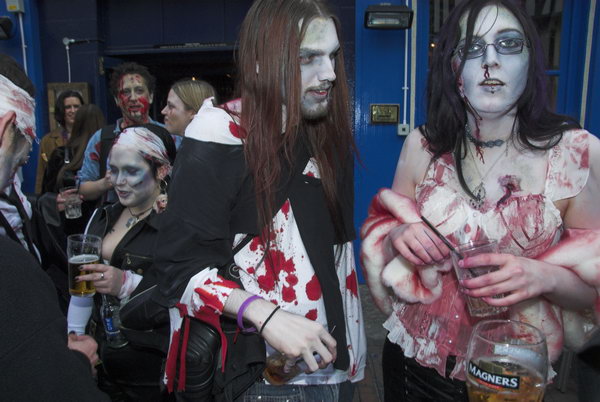
On that occasion the pub ‘Crawl of the Dead‘ had started in late afternoon, and although the light was failing there was still enough to work with even by the time I left them.
The following year, in the City of London, the Crawl of the Dead started later, which was probably better for zombies but not for photographers, though I was able to take some pictures before the start in ‘Ye Olde London’, a rather dimly lit pub with some appropriate decoration.
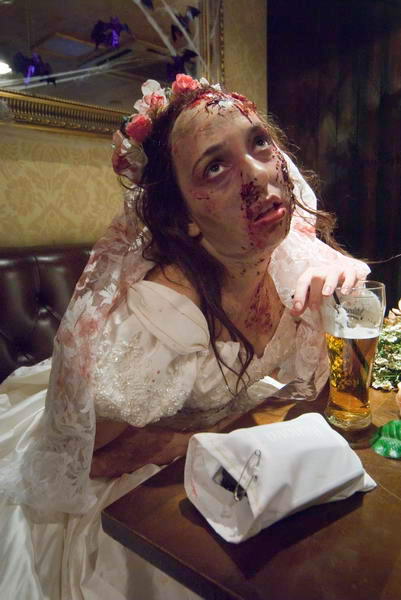
but by the time we got to staggering on the streets things were a little trickier.
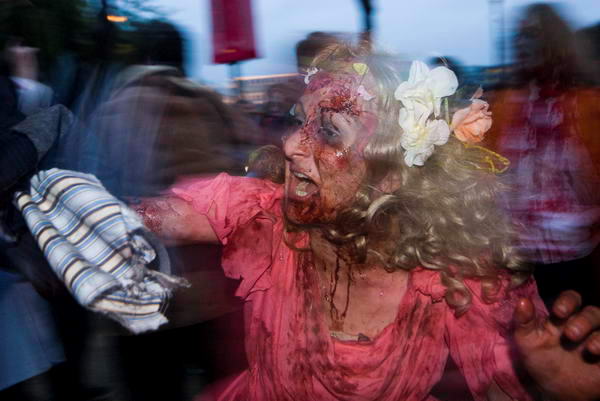
It certainly didn’t help that my SB800 flash decided to pack up – in need of a rather expensive flash tube replacement – and I was left only with the built in flash on the camera, really only suitable as a fill, and not usable with big lenses which cast a shadow in the image area.
This year it was fully dark when the ‘Dance of the Dead’ street parade from Hoxton Square to Dalston was gathering, and the rather dim street lighting had the very orange colour of sodium lamps.
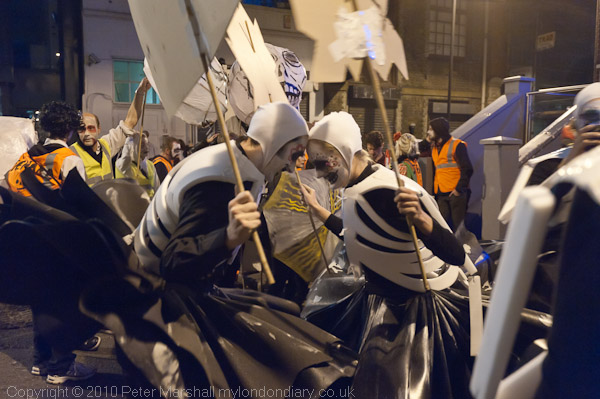
So although there was just enough light in some of the brighter areas to take pictures at ISO3200 and get some reasonably sharp, it isn’t possible to get good colour, even when shooting RAW, as the light is essentially monochromatic orange and sadly lacking in other colours. The image above, taken at 1/20 f4 was about the best I could get.
Using the SB800 mounted on the D700 camera did produce some better results, but the orange light was still a problem. You can’t light up the whole world with a single flash, so I normally use flash at high ISO when I can to pick up enough ambient exposure to add some background detail. Because of the poor colour of that ambient and to get better quality in the flash lit areas, I compromised on using ISO1000. With the flash I was working at 1/60 f7.1 to get a bit more depth of field and avoid movement blur where the ambient was stronger. I think that was equivalent to around 4 stops underexposure for the ambient, but I didn’t make a precise calculation. Looking at the results on the computer now, I can see that the flash, despite being set at -2/3 stop was actually overexposing slightly, though seldom enough to burn out the highlights completely.

My favourite image from the event was also the simplest, a young girl waiting for the event to start. I photographed her first with her mother standing watching the preparations, then got down on my knees to make this image, in which her witches hat becomes a kind of purple halo.
There are some other pictures that I quite like – and you can see a largish set on My London Diary – but none that really lived up to my expectations, as it was a very tricky, fussy and at times fast-moving event. Perhaps if I’d followed the parade further I would have found some better lighting, and the dance at the end might well have been fun, but I’d been on my feet and taking pictures for over 7 hours and was feeling rather tired, and when I saw a bus approaching I rushed across the road to jump on it and start my journey home. Perhaps next year I’ll do better.
